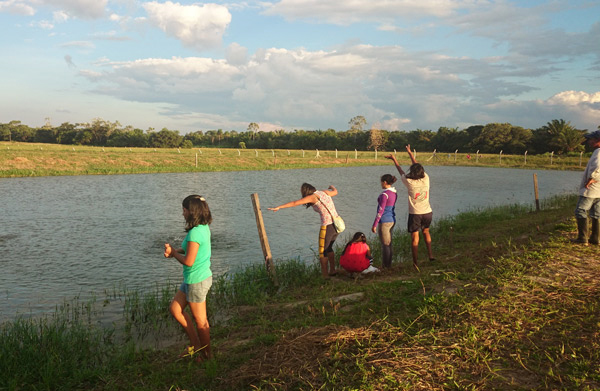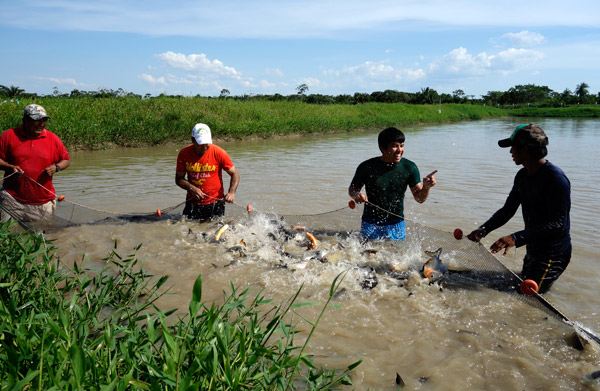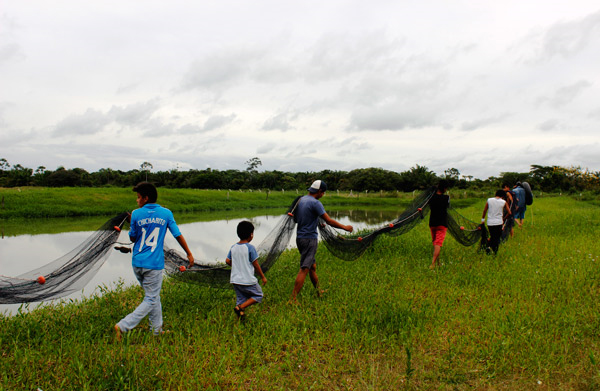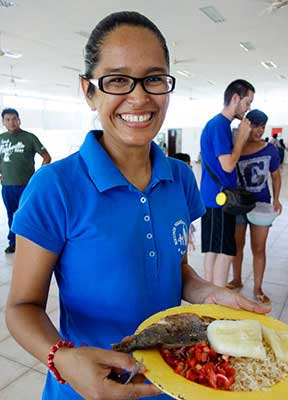Improving Sustainability in Bolivia
The fish pond project at NPH Bolivia is helping teach the children valuable skills, providing them with food and raising revenue for the home.
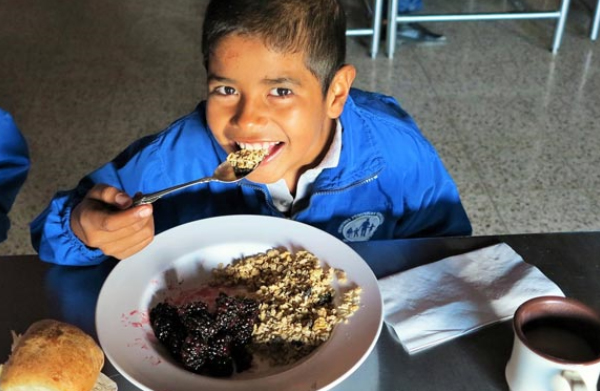 Reported by Martin Bliem
Reported by Martin Bliem
Communication Officer, NPH Guatemala
July 17, 2017
After half a year of investigation and receiving the advice of many people, including Dr. Edwin Gamarra who runs his own fish farm, we decided to begin constructing our own – two 2,500 square meter (26,910 square ft) ponds.
Dr. Edwin Gamarra, who ultimately supervised the construction of our ponds and gave advice in the first years, shared the expectation that one day our ponds could produce about 5,000 kilos (11,020 pounds) of fish per year – an ambitious goal that we could even exceed.
After the two fish ponds had been excavated, 25 by 100 by 2 meters each, the area was prepared and the well was built to keep the ponds filled with water. By May of 2016, 6,000 young red-bellied pacu fish were released into one of the ponds.
The red-bellied pacu, a close relative of piranhas, is a fish that has its origin in the Amazon. They feed on plankton, crustacean’s micro, fruits, algae, larvae and can reach up to 88 cm (2.9 ft) in length and 25 kg (55 pounds) in weight. We chose to breed pacu because it is especially appetizing, and pacu pisciculture has developed significantly in the region.
In July of 2016, half of the fish that were previously placed in only one pond, were moved to the other one, thus giving the young fish more space and enabling them to grow faster.
In August, Tío Hugo, Director of Farm and Field, welcomed a new member to his farm and field team: Erland Payares, a young farm worker and former teacher at an agricultural institute. Together, they have formed an amazing team, showing excellent results both in the fish projects and in the whole farm and field sector.
When the first official measuring and weighing of the fish was made in October 2016, the biggest pacu measured 30 cm and weighed 980 grams, almost reaching its minimum commercial weight of 1 kg.
Finally, on the Day of Epiphany (January 6th 2017) the first harvesting of the fish was realized and 110 children and the employees had a delicious grilled pacu meal on their plate. Ever since, every second Friday, we have been eating fish together with rice and yucca from our gardens, served with a fresh salad. This is a very special dish that is loved by kids and employees (despite some tiny fish bones).
The previous fishing, filleting, and grilling is an enormous team effort and several youths participate in it. Our fish project not only offers our children more variation in their food but also in the daily rhythm. Fishing with a net is an exciting event, that teaches our children pisciculture as well as working together in a team.
In April we moved all fish to one of the two ponds, creating space for the next generation of young pacu fish to grow. At the same time, we also started to sell our fish. We notice a sufficiently large demand making our fish ponds project a great success.
This positive result also attracts unwanted guests. Lizards longer than one meter and alligators found their way to our fish-filled ponds. As their appetites were too big, they had to be removed. A fencing with a wall foundation has been built to keep those hungry guests outside.
Related Information:
• NPH Bolivia
• Nutrition at NPH
• Sustainability Programs
• How Your Help Makes an Impact at NPH








